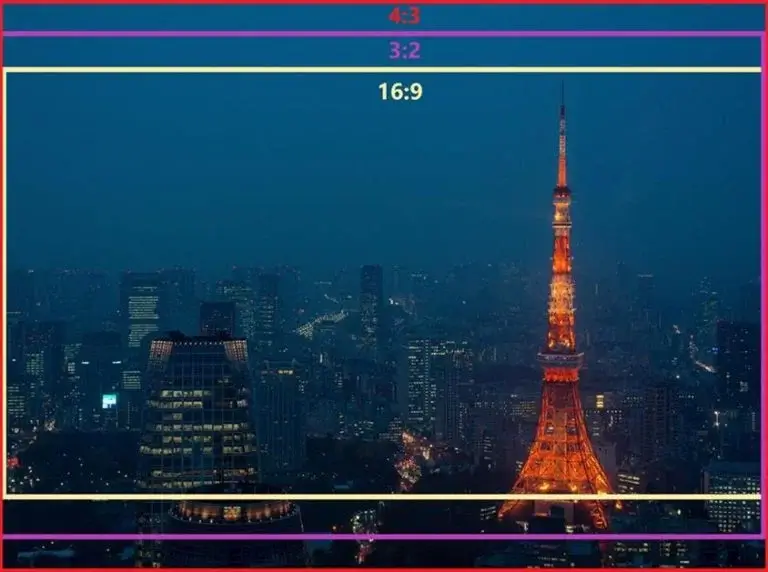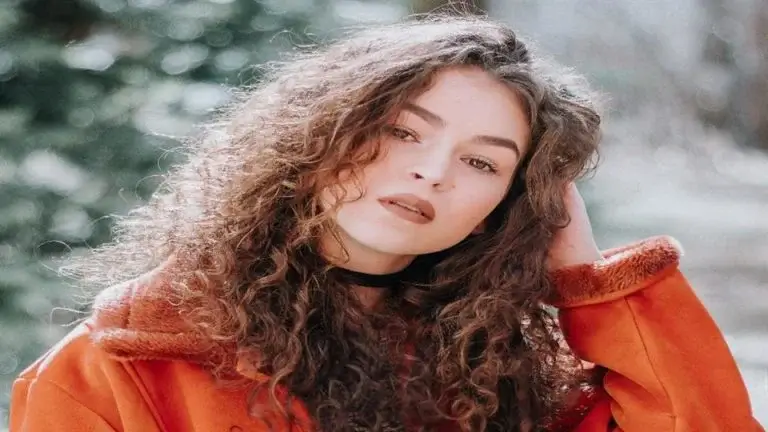Are you confused about 16:9 vs 4:3 aspect ratios? How your images appear on screens, in print, or online depends on the correct ratio. This guide will help you compare these popular ratios, explain their best uses, and frame shots like a pro.
What Is Aspect Ratio in Photography and Video
An aspect ratio is the relationship between the width and height of an image or video frame, usually expressed as two numbers separated by a colon. This determines how your content displays on screens, printed materials, or social media.
Popular aspect ratios include:
- 16:9 – Suitable for widescreen video and cinematic content.
- 4:3 – A high-resolution, classic screen format.
- 3:2 – Standard for full-frame cameras, versatile for prints.
- 1:1 – Square format, great for social media.
- 9:16 – Vertical format, optimized for mobile content.
Understanding aspect ratios will help you choose the right format for your project, avoid cropping issues, and create great images or videos. Following is a diagram showing the three most popular aspect ratios.

16:9 vs 4:3: Key Differences Explained
When it comes to photography and videography, 16:9 and 4:3 are two of the most commonly used aspect ratios. But they serve different purposes and create distinct visual experiences. Understanding their differences can help you choose the best format for your project.
16:9 Aspect Ratio – When to Use It
16:9 aspect ratios are ideal for projects that require a wide, cinematic appearance. For the following applications, it is most effective:
- Content such as YouTube videos, films, or widescreen presentations
- Photos that emphasize horizontal space, such as landscapes and panoramic
- Widescreen displays on modern monitors and screens

4:3 Aspect Ratio – When to Use It
The 4:3 aspect ratio is more traditional and balanced, which makes it ideal for photography and print projects:
- Subjects that require height, like portraits
- Print or screen photography
- Compositions that are tighter and squarer

What Happens When You Choose the Wrong Aspect Ratio
As a result, photographs and videos with an aspect ratio that does not match the display will be chopped or distorted. Using a 4:3 aspect ratio on a 16:9 monitor, for example, will result in a border on each end of your image.

If you want your 4:3 image to fill the 16:9 monitor’s screen width, it will either be distorted or heavily chopped.

The very same approach applies if you wish to present a 16:9 picture in a 4:3 layout, such as an 8X10 printed photograph with a 4:3 aspect ratio.

It’s critical to utilize the right aspect ratio before taking a photo or video since you’ll have to distort or drastically crop it later.
The History Behind 16:9 and 4:3 Ratios
4:3 was the standard aspect ratio during the early years of television. In earlier TVs, 4:3 images were often used in silent films, giving screens a square shape that many remember from childhood.
When sound was introduced in films, the aspect ratio was slightly adjusted to 1.37:1 (instead of 1.33:1), increasing frame width by about 4%. As a result, sound was better integrated while maintaining a classic 4:3 shape.
When Did We Start Using the 16:9 Aspect Ratio?
Moviemakers and theaters were concerned that as home televisions became more popular, they would be driven out of business. To attract more viewers, they changed the aspect ratio of their films from 4:3 to 16:9. Films felt more engaging and larger than life with a wider frame.
This was a success, and more people went to the movies instead of remaining at home and watching television. Most television and film productions still utilize the 16:9 aspect ratio today.
What is the Best Aspect Ratio Photography to Use?
Aspect ratios depend on your project and whether you’re shooting photos or video. Video should be 16:9, and photography should be 4:3 or 3:2. If you’re not sure, this baseline is great.
Next time you shoot, experiment with different aspect ratios in the settings of your digital camera. By experimenting with multiple formats, you’ll learn how each frames your subject.
Aspect ratio defines the width and height of a frame. Your choice should reflect how you want your images and videos presented. The goal of photography and videography is to capture moments that are visually pleasing and enjoyable.
Frequently Asked Questions On 16:9 vs 4:3
16:9 is a widescreen format ideal for videos, landscapes, and modern displays. 4:3 is more square-like, better for portraits, prints, and traditional screens.
For most photography, 4:3 or 3:2 is recommended because it captures more vertical detail, making it perfect for portraits, prints, and classic compositions.
16:9 is the standard for videos, especially for YouTube, films, and widescreen presentations. It captures more horizontal space and feels cinematic.
Yes! Most modern cameras allow you to adjust the aspect ratio in the settings. You can experiment with 16:9, 4:3, or 3:2 depending on your project.
Using the wrong ratio can result in cropping, distortion, or black borders when displaying images or videos. Choosing the right ratio ensures proper framing and a professional look.

